Description
Current concise reviews of the albums by adult alternative, contemporary, and crossover artists. Images
of album artwork and links to both internet-based resources are always included. Click on the title to
view the article.
Content
White Willow
Annie Haslam
Leigh Nash
Moya Brennan
Louise Setara
Kemopetrol
Holly Brook
Freud
ZetaBoo
Karl Jenkins
Karl Jenkins
Johnnie Burton
Links
Digest Index
More Digest Entries
Previous Digest Entries
Current Digest
Instrumental Digest
|
 |
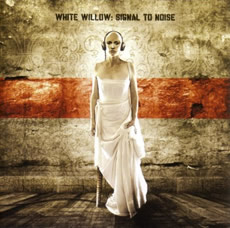
Image © The Lasers Edge 2006
More White Willow:
Storm Season
Sacrament
|
|
(14 September 2006) Not known for their speed of activity, it is a very pleasant surprise that White Willow's fifth studio album should follow less than two years after their excellent last effort Storm Season (review). Not that it takes the band--or at last band leader and main songwriter Jacob Holm Lupo--that long to generate material, it is usually the recording and mixing process which takes the time. It is probably this reason that has led to the band taking the unusual step of recording the album largely outside Oslo--indeed outside Norway--at Jailhouse Studios in Denmark. This has led to a streamlined and remarkably fast recording process, which shows in the consistency of tone throughout the album. The result is Signal To Noise (Laser's Edge (USA) LE1046, 2006). The band also used an outside producer for the first time--Tommy Hansen (of Helloween fame)--that has led, in part at least, to a refinement of the band's sound. As usual, there have been line-up changes within the band to contend with. Second guitarist Johannes Saeboe, whose presence helped give Storm Season its metallic crunch, has since departed, leaving Jacob as the lone guitarist, once again. Long-serving singer Sylvia Erichsen has also moved on amicably, to be replaced by the honey-toned and versatile Trude Eidtang. All these factors have led to another evolution in the characteristic White Willow sound palate away from the dark, gothic metal of the last album towards a brighter jangle, with Jacob's guitars--and indeed his songwriting--taking their cues this time from indie rock rather than metal. Trude's vocals are perhaps lacking the character of Sylvia's but compensate with a thoroughly likeable and accessible warmth. Indeed, the album has some very effective and carefully constructed vocal arrangements, which are the most refined since perhaps Karnataka's Delicate Flame of Desire. Fans of the band should not worry, however. This is very much a prog album, and while Jacob's song writing is more concise, there remain plenty of his characteristic lead guitar lines for the listener to enjoy. Lars Fredrik Froislie makes some significant keyboard contributions on a battery of instruments vintage and modern, though his natural extravagance is somewhat repressed for the sake of the overall sound of the album while Ketil Einarsen's flute is an atmospheric tool rather than a virtuosic one, as it was in Tirill's A Dance with the Shadows album (review). Jacob's lyrics, once again, are somewhat bleak, with “Night Surf,” “the Lingering,” “Splinters” and “Dusk City” all tackling issues of destruction, loss and regret. Indeed night and darkness are regular themes in all six vocal tracks, although “Joyride” and “The Dark Road” both have more upbeat messages, albeit those that suggest the possibility happiness in times of adversity. “Night Surf” kicks off the album, the illusive nature of the verse melody somewhat unsettling, giving way to some haunting flute and Mellotron, before a crunching, almost metallic closing section. The lengthier “Splinters” is up next with a lovely lead guitar line to start, giving way to a relatively quiet verse building tension towards to a more powerful chorus. Guitar dominates the instrumental sections, though Lars' atmospherics and Marthe Berger Walsinthen's bass is particularly impressive. An instrumental entitled “Ghosts” follows. This is a sinister, if slightly more contemporary-sounding sibling to the powerful “A Dance of Shadows” from the under-rated Ex Tenebris album. Here, the sheer power of Ange Moltke Schou's excellent drumming makes itself felt and Jacob’s guitar weaves scorching patterns in characteristic fashion. “Joyride,” however, is almost a complete departure for the band, a genuinely joyous four minute slice of indie pop, deservedly released as a single in Norway. Despite its total lack of progginess (except for some stabbing Mellotron), this is one of the band's finest moments, gorgeously upbeat and beautifully sung by Trude. It will defy even the most hardcore of prog fans not to tap a foot appreciatively. If only all pop records sounded like this. “The Lingering” keeps the quality up in searing fashion. It is a passionate, emotional song with a lovely vocal performance from Trude, and a masterful instrumental break with brilliant, aggressive solos for both Jacob and Lars on Moog. The song seems to end 6 minutes in, but is further enhanced by a gorgeous instrumental coda, gently building over a shimmering keyboard background, before a melodic guitar solo over choral Mellotron ends a remarkable piece of music. “The Dark Road” again suggests Karnataka. It is a fragile, Celtic-infused ballad with a lovely arrangement that feels genuinely traditional, while “Chrome Dawn” is another instrumental with a fluid, spacey lead guitar line, giving the track the feel of a jazz-rock piece played at half speed and former keyboard player Brynjar Dambo contributes a jazzily-appropriate Moog solo. The excellent “Dusk City, with its overdriven bass intro completes the album. This a slice of typically unusual proggy hard rock, that has a strangely eastern feel to it. A brief, charming Eastern-inflected guitar instrumental “Ararat” closes the album. Once again White Willow have re-invented themselves, and produced an album of freshness and invention. Around the middle of the album--“Joyride” and “The Lingering” in particular--the band reach new heights of melody and emotion, and while the rest of the album does not manage to climb so high--two instrumentals over a relatively brief 51  minutes is perhaps one too many--it is quite possibly even more consistent than Storm Season in terms of tone and song-writing. Another masterpiece.--Stephen Lambe in Cheltenham, England and Russ Elliot in New York minutes is perhaps one too many--it is quite possibly even more consistent than Storm Season in terms of tone and song-writing. Another masterpiece.--Stephen Lambe in Cheltenham, England and Russ Elliot in New York 
|
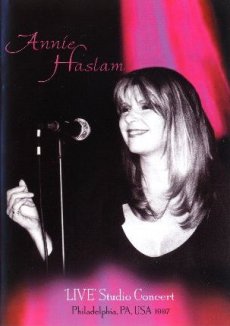
Image © White Dove Records 2006
\r\nmanufactured and distributed by Voiceprint UK
More Annie Haslam:
Renaissance Live (2001)
BBC Sessions (1999)
Northern Lights Renaissance Website
|
|
(02 December 2006) The latest in concert recordings released by Annie Haslam--and presently exclusively by Voiceprint in the UK--is entitled LIVE Studio Concert (Voiceprint (UK) VP379CD, VPDVD20, 2006). The recording was done in a Philadelphia, PA studio for the Prism TV Network in 1997. A nine track DVD available in both PAL and NTSC, and a ten track CD are individually sold. The CD includes the bonus track "Goodbye Trees." The recordings feature contributions by Annie Haslam's band at that time including: Rave Tesar (keyboards), Dave Biglin (keyboards, guitar, vocals) and Joe Goldberger (drums, percussion, backing vocals). The material is drawn from Annie's solo and Renaissance repertoire. Although the video recording has been available in the videotape community for some time, this is the first official release of the concert, mastered from original tapes. It is a must have for new and long time Annie Haslam and Renaissance fans. Both viewers and listeners will be delighted with the quality of these releases. Video is crisp and perfectly synced with the audio. A small studio audience consistently expresses delight after each stunning performance. Annie's vocals are in impeccable and delightful form, consistently soaring across her stunning five octave range. Her solo material is exquisitely delivered. The band are tremendous at the Renaissance covers, obvioiusly influenced by Annie's blessed vocal work. In addition to the inclusion of artist chat so often removed from live recordings, enthusiasts will be delighted with some of the more exclusive tracks Annie has chosen for these releases. Pay particular attention to the live performances of "Captive Heart" from Novella, "Sleepless Mother" and "Goodbye Trees." These recordings were performed in the run up to Annie's 1987 Brazilian tour and serve as stunning samples of what was to be delivered that spring. Although the fan community has been flooded with a vast array of Renaissance remasters and various versions of both the band's and individual artists' live recordings--official and unofficial--these two exclusive Annie Haslam (and her band) recordings are certainly amongst the very best and are absolutely the most memorable live versions of the artist's work available today in these formats. The material harkens back to performances ten years ago. It produces high quality renditions of artists on stage earlier in their career than present day and in a configuration that was then only visible to a small subset of the world's population. These releases extend their reach substantially and will draw significant attention this year and in the years to come. Bravo! 
|
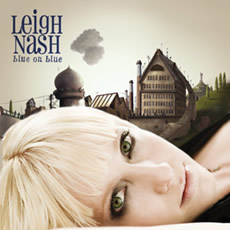
Image © One Son Records 2006
and Nettwerk Records 2006
More Leigh Nash
Interview and Photos
|
|
(01 October 2006) The debut solo album from former Sixpence None The Richer lead vocalist Leigh Nash is an eleven-track collection entitled Blue On Blue (Nettwerk Records (USA) 0 6700 30611 2 4, 2006). Prior to the album's release and just before her solo tour in early August 2006, Musical Discoveries staff caught up with Leigh for an interview. Our album review is presented below. Leigh is accompanied by various artists across the album. In addition to performances by Pierre Marchand, the "line-up" consists of: Alain Berger (drums and percussion), Jean Francois Lemieux (bass), Colin Cripps (guitar), Jason Lang (guitar), Vincent Rehel (keyboards, strings and piano), Maurice Soso Williams (bass), Justin Allard (drums and percussion), Michel Pepin (guitar), Tom Mennier (keyboard), Michel Dubeau (clarinet, duduk), Simon Godin (guitar), Jocelyn Tellier (electric guitar), Mark Bell (percussion), Vincent Rehel (keyboard and piano), and George Grancharoff (drums). While the vocals on Blue on Blue are indeed reminiscent of Sixpence None The Richer, the album clearly opens with the mid-tempo "Along The Wall" in singer/songwriter territory, with Leigh's whispy voice backed by keyboard, electric and slide guitar. The delicate arrangements within "Nervous In The Light Of Dawn" perfectly support Leigh's vocals. The arrangement builds in richness with harmony layers and keyboards in the second half of the song. The album's first big standout is "My Idea of Heaven." An upbeat guitar laden track with crisp percussion, Leigh's sensitively delivered vocal is backed with lush harmonies in the hook-laden chorus. "Ocean Size Love" opens with delicately delivered piano, Leigh's voice soaring as the arrangement builds with further keyboards, pulsing percussion and guitar into the chorus. "Never Finish" is a lovely ballad with Leigh's searching voice gently backed by a rich arrangement. The tempo drops and reverb increases in "Between The Lines," as electric guitar, keyboard and crisp percussion support Leigh's incredibly evocative vocal delivery. Electric guitar leads the instrumental backing in "More Of It," percussion and additional arrangements contributing to the infectious hook of the chorus. "Angel Tonight," one of the album's more upbeat and pop-oriented standouts continues to illustrate the singer's virtuosity with lead backed with lush harmony layers, and her obvious ability to lure listeners into her web. The robust electric guitar and upbeat arrangements in "Blue" add to Leigh's lead and Pierre Marchand's backing vocals. We especially enjoyed the vocal effects processed into the song. "Cloud Nine" is a stunning and upbeat pop-song with vocals distinctly mixed above the instrumental. The infectious hook is reminiscent of the artist's earlier work. The album concludes with a Beatlesque arrangement in the ballad entitled "Just A Little." Enthusiasts will be especially impressed with the vocal production and soft electronic arrangements. It is a stunning conclusion to this superb album. Leigh Nash certainly continues to please with Blue on Blue. Working with producer Pierre Marchand, the blend  of singer/songwriter, rock and pop tracks works extremely well while illustrating the artist's tremendous songwriting, overall virtuousity and vocal talent. Not to be missed! --Audrey Elliot in New York of singer/songwriter, rock and pop tracks works extremely well while illustrating the artist's tremendous songwriting, overall virtuousity and vocal talent. Not to be missed! --Audrey Elliot in New York
|
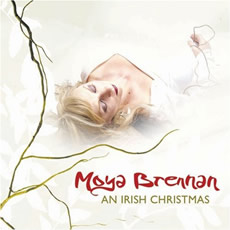
Image © Sparrow Records 2006
American Release
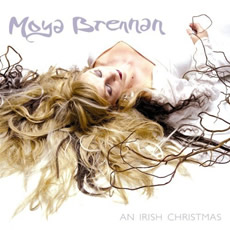
Image © BEO Records 2005
Irish Release
More Moya Brennan
Signature (2006)
Two Horizons (2003) w/interview
In A Lifetime (2003)
A Magical Gathering (2002)
New Irish Hymns (2001)
Whisper To The Wild Water (1999)
Live in Alexandria, VA (1999)
|
|
(25 November 2006) These days almost every artist in the music business--may it be Pavarotti or Mariah Carey for example--tend to release at least one Christmas album during their careers. Sadly, many of these albums are often made in a hurry, without too much thinking what kind of material the albums will contain. This then creates often cheap-sounding results that lack both quality and cohesion. Luckily, there are also Christmas albums that do not fall into that category, one of them being An Irish Christmas (BEO Records (Ireland), Sparrow Records USA) FIERCD19, 2006) by the First Lady of Celtic Music, Moya Brennan. Although most of the chosen pieces are familiar for most of the listeners as songs, Moya and her team have succeeded to find great, new dimensions from the Christmas classics. The arrangements have been made with great style, so that the original moods of the songs have not been disturbed nor buried under the re-arrangements, but only enriched instead. On the album there are carols for almost every mood and every taste; from beautifully lilting "Deck The Halls" and "Joy To The World" to the more meditative pieces such as "Gabriel's Message" and the breathtaking "In The Bleak Midwinter". Not forgetting, of course, Oíche Chiúin, the Gaelic version of the world-renowned song "Silent Night". Many might know that Moya's sister Eithne (known in the music business as Enya) made her own version of this song already some time ago, but Moya's rendition should never be considered as a "rival" for neither Enya's version nor any other versions of this song. Although there are both jolly and peaceful carols in the album, it doesn't make it sound overly diverse. Moya and her team have done a great job of choosing material from almost endless cornucopia of various Christmas songs, as each and every one of the chosen songs suits to Moya's voice extremely well. An Irish Christmas manages to touch the hearts of both those hardcore fans who already are familiar with her music as well as those for whom Moya is only a recent discovery. The American 2006 album release differs from the 2005 Irish/Rest Of The World release in two tracks. "I Still Believe" is replaced by "What Child Is This" and "Love Came Down at Christmas" is replaced by "Angels We Have Heard On High." We certainly think that Moya's An Irish Christmas is  by a million miles one of the best seasonal albums made for several years!--Suvi Kaikkonen in Oulo, Finland and Russ Elliot in New York by a million miles one of the best seasonal albums made for several years!--Suvi Kaikkonen in Oulo, Finland and Russ Elliot in New York
|
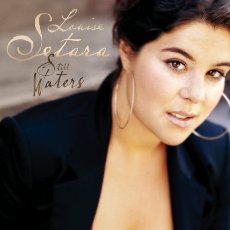
Image © Manhattan Records 2006
More Louise Setara:
Interview and Photos
|
|
(29 December 2006) Louise Setara is a young British artist whose debut release Still Waters (Manhattan Records (USA) 946-3-54715-2, 2006), a collection of soulful covers and two original songs, is drawing attention from fans of Norah Jones, Mariah Carey and Whitney Houston. EMI and Manhattan Records granted Louise's first ever press interview to Musical Discoveries this summer. Read about the artist's background, the making of Still Waters, her feelings about live performances as well as her future dreams in this interview. When listening to Louise Setara's album, one may instantly be harkened to the sound of Norah Jones. Perhaps Manhattan picked up on that when Coast Records presented the album to this major EMI label for consideration of USA release. Soulful textures, at times a husky voice but with range, and power characterise her sound. That the album is a collection of both popular and obscure covers is neither a disappointment nor an enthralling delight. Production is first class--rich arrangements underscore the sound on all but one a capella track. There is no denying that this young woman can sing. Cover tracks include "Love Me Still" (C. Khan-B. Hornsby), "By the Time" (S. Climie-G. Kennedy), "Make You Feel My Love" (Bob Dylan), "Too Soon" (K. Mashlich-A. Mashlich), "Can't Stop The River" (Seal-P. Gordeno), "Sylvie" (Trad., Arr. by Ladysmith Black Mambozo-Hill-Setara), "Let It Be Me" (Bécaud-Curtis-Delanoé), "If I Should Fall" (Bruce Springsteen), "Ain't Gonna Let You Break My Heart Again" (J. Lasley-D. Lasley). Louise's original tunes are the true highlights of the album. The sheer power and melodic hook of "Wrong Again" (Porter-Setara-Gordeno) are extremely memorable. Backing vocals provide an excellent texture to the track. The choral almost a capella treatment of "Circle" (Trad., Arr. by A Clark-L. Setara) demonstrates the power, range and versatility of the emerging singer. The primarily acoustic guitar-based "I Can Hurt" (T. Frasier-L. Setara) is a lovely singer/songwriter styled ballad that continues to reveal Setara's chops. Her evocative delivery clearly demonstrates her great potential. While Louise does not appear to be setting the charts on fire with this new release, there is no doubt that her work will draw attention, especially with the new 2007 Norah Jones release. Music enthusiasts have great passion for Louise's style of music. Additional promotion by Manhattan Records in America and Coast Records in the United Kingdom during 2007 is certain to bring Louise and her music the attention she so rightly deserves.--Audrey Elliot in New York Additional promotion by Manhattan Records in America and Coast Records in the United Kingdom during 2007 is certain to bring Louise and her music the attention she so rightly deserves.--Audrey Elliot in New York 
|
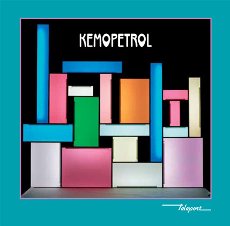
Image © Plastinka Records 2006
Laura Närhi Interview and Photos (2006)
More Kemopetrol:
Slowed Down (2000)
Everything's Fine (2002)
Play For Me (2004)
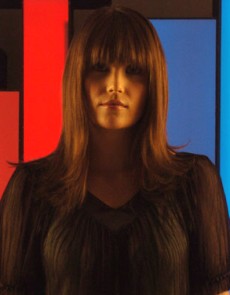
Laura Närhi | Photo by Mikko Harma
Image © Plastinka MusicMakers 2006
|
|
(29 December 2006) Teleport is the fourth album from Finland's superior Euro-pop/rock band, Kemopetrol. It continues much in the vein of their very successful third album, Play For Me with the emphasis again on the pop end their diverse capabilities. Earlier this year Musical Discoveries conducted an in-depth interview with Kemopetrol's stunning lead vocalist, Laura Närhi. Although the interview was completed mid-summer, it provides an excellent peek into the band's formation, artist backgrounds and future plans. Kalle's love of majestic 80s pop anthems perhaps colours the sound more than on any of the band's previous releases, but mixed, as it is, with contemporary grooves and beats, the result is distinctively original, though that's not to say that there aren't retro moments as in "Am I going To Heaven" for example which is a song Supertramp in their pomp would have been mightily proud of. The album is littered with great melodic hooks, and whilst the choice of "Planet" as the first single is in some ways understandable as it's an archetypal 21st century pop piece, it's also the weakest track on the album and doesn't have a melodic hook to compare with songs like "You Heal," "Am I Going To Heaven," "Any Day's OK" or the Garbage-tinged "Overweight And Underage" all of which will have you singing along after just one chorus. In amongst the predominant full-on arrangements, there are moments of less bombast, the reflective and laid back "Facing Yourself," for example, and the closing song "Private Encore" arguably the best piece on the album. All the songs are written by keyboard player and founder Kalle Kovisto and the band mostly play to their strengths, strong melodies with great hooks, the ability to create hypnotic grooves, and lyrics which can occasionally surprise with their ironic twists. All this combined with the jewel in the band's crown, the gorgeous and distinctive voice of singer Laura Närhi, ensures that the disc has class stamped all over it. What it maybe lacks however is the shades of darkness that were so prevalent on their debut album, the wonderful Slowed Down and which have been vanishing with every album since. Lyrically, there may still be occasional shadows, but the music is too relentlessly bright and upbeat, at times seeming almost forced, like a fixed grin. Teleport like its predecessor, Play For Me, went directly to No. 1 in Finland on release and it's easy to hear why, but it the long run, it won't have the staying power of the band's earlier releases.--Jamie Field in Hereford, England 
|
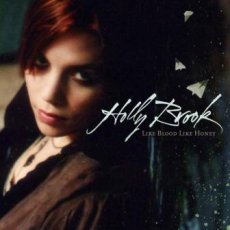
Image © Warner Brothers Records 2006
Interview and Photos (2006)
|
|
(30 December 2006) A lot of roads lead to Holly Brook (the singer, not a picnic destination). There's the hip-hop path, on which plenty of next-big-thing predictors got to know her through her collaboration with Fort Minor on The Rising Tide (her haunting chorus on "Where'd You Go" became an instant hit). Then there's the TV path, on which anybody with an ear for pop with staying power could have chosen between a couple of trails: both the NBC show Conviction and the WB series Related have featured her plaintive song "What I Wouldn't Give" off this, her debut. Holly Brook's debut album is entitled Like Blood Like Honey (Warner Brothers Records (USA) 9362 49298-2, 2006). It is a collection of eleven singer/songwriter-styled tracks. In the run up to the release earlier this year we caught up with Holly to discuss her background, the album, and her thoughts towards the future. The results of our interview are joined by photographs of the artist courtesy of the label and artist's MySpace site. If you search out this piano-propelled 20-year-old star in the making, though, you won't be sorry. In the space of three songs, she recalls a decade's worth of singer-songwriters twice her age, and in an unhurried, stylish way that suggests she's doing it handily. A wrenching Tori Amos vibe weaves through "Again & Again," a track that recalls Shawn Colvin in equal measure; Suzanne Vega circa Solitude Standing surfaces in the vivid short verses of "Saturday"; and Sarah McLachlan seeps out over most of the vocals, but especially those on "Give It Up for You" and the lovely "Cellar Door." Joni Mitchell is the association Brook was going for--she cites her as influence number one--but comparisons with the more obvious mentors can't come as much of a bummer. The  Joni connection may surface yet: Like Blood Like Honey is surely a trickle in a long career to come.--Tammy La Gorce at amazon.com and Russ Elliot in New York Joni connection may surface yet: Like Blood Like Honey is surely a trickle in a long career to come.--Tammy La Gorce at amazon.com and Russ Elliot in New York 
|
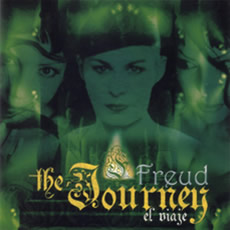
Image © Tantajo Records 2006
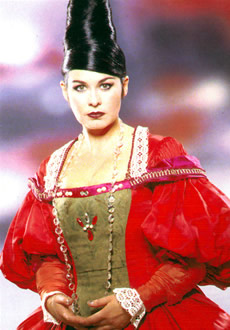
Cora O'Donovan
Image © Tantajo Records 2006
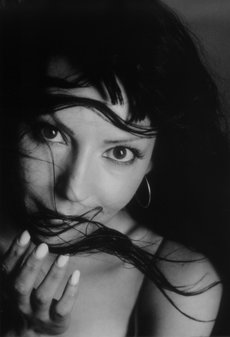
Maria Sanchez
Image © Tantajo Records 2006
More Freud:
Time Passengers (1998)
The Great Crossing (2001)
|
|
(02 December 2006) The long-awaited followup to Time Passengers, Freud's newest album, The Journey (Sony BMG (Mexico) 86970 19012, 2006), is a truly amazing and mesmerizing collection of songs that takes your breath away. Lead female Dublin-based vocalist, Cora O'Donovan, thoroughly captures the listener with her stunning and enchanting vocals. The material features her talent on vocals and bodhran, Ingo Hauss on keyboards, grand piano, guitars and programming and introduces Maria Sanchez on additional vocals (more photos). A wide variety of international session musicians have contributed an extensive range of instrumental accompaniment to the album. This album has vocally-laced melodies, reminiscent of Enya's distinctive sound. Freud has had one formal release and some tasters that have all displayed their incredible blending of music and voice. Time Passengers (1998) was their brilliant (review) debut album, and Cora contributed to Spirit of the Sun (2001) by Elysia (review). Also in 2001, an unreleased Freud album called The Great Crossing (review) was circulated to the music media exclusively as a preview. Several of the songs on that CD now appear in finished form on The Journey. Their stunning and uplifting sound blends instrumentals with enchanting vocalise. Freud achieves a delicate balance with the soothing and melodic rhythms in their Celtic/ambient/dance based soundscapes. The ethereal compositions beckon the listener into a magical realm. The lovely, lush New Age sounds of "Deja Vu" set the mood for the captivating tunes to follow. Cora's soaring vocals stand out and create a relaxing, peaceful atmosphere. Keyboards introduce "The River" and Maria Sanchez' tantalizing vocal interludes. Her breathy and airy quality adds to the stunning melody. The album is extremelywell produced and enjoys an extremely lush quality. The Celtic-flavored ballad "Eden" is a prime example of this sumptuous music. Cora's vocals are luxuriant and uplifting. "Mystery Moon" has an almost dance/techno sound with choir-like vocal layers performed in a style similar to the musical group, Delerium. The short spoken elements also have a lavish and hypnotic aspect. Evocatively performed with vast mood swings and worldly atmospherics, various movements of "The Avebury Circle" elicit what must be Freud's interpretation of Druid worship to the listener's mind. There is mystical feel that lures you into the stone circle. The electronic ethereal world-moodiness continues with "Garden of Love," sung again by Maria. Indeed her verdant vocals spellbind the listener. Dominated by layers of Cora's evocative vocals, "The Journey" is much more pop-oriented, but untraditionally so, a departure from Freud's norm--but it works, and works well. The song is further enhanced by the lovely French vocals by Domenique Horwitz. Cora's powerful lead vocals are supported by lovely and rich harmonies in the wordly standout track "Phantasmagoria." There is a sensual aura in Cora's whispered and alluring vocals in the verses. Rich synthesizer passages form the musical foundation for the album's instrumental, "The Great Crossing." Strings and keyboards carry different elements of the melodies that comprise the piece with its soothing and melodic rhythms. "El Jardin Del Amor" again focusses on the mesmerizing quality of FREUD's music genius. The album finishes with the bonus track, "World of Wonders," from the amazing Time Passengers album.The highly accessible and almost pop-sounding track features powerful and lush layers of vocals that comprise yet another an Enya-style choir in this symphonic piece. Arrangement and production are rich throughout this CD with equally influential treatment of the deepest bass and highest flute. Synthesizer is used to wonderful effect to lay a rich foundation for Cora and Maria's stunning vocals. Choral elements blend into the instrumentals in the non-lyrical passages. Freud does not disappoint with their enchanting vocals and spellbinding charm. Cora O'Donovan and Maria Sanchez' magnificent voice combined with the ambient melodies raise the listener to a higher plane of sheer ecstasy. There is tremendous tenacity of sound emerging here with this marvellous group of talented musicians. The album is available on Tantajo Records in the EU and Sony BMG in the Americas. It is also available on iTunes from 11 December 2006. The sound is bliss and The Journey is definitely a voyage to be relished.--Audrey Elliot with Russ Elliot in New York 
|
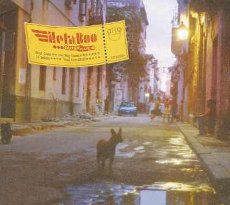
Image © Aito Records Ltd 2006
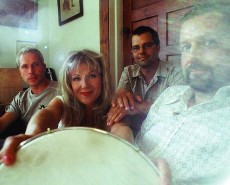
Image © Aito Records Ltd 2006
More ZetaBoo:
MediZine (2000)
|
|
(24 December 2006) East, west home is best? Not always, at least if one is talking about OuterRail (Aito Records Ltd (Finland) AICD009, 2006)--the latest and third album by ZetaBoo. For several years, this particular group has been bravely making their own adventures in the vast world of different musical styles and genres, and now they are continuing this interesting journey a bit further. And what a journey they provide, as one will hear right from the start that the music indeed meanders through not-so-commonly followed pathways, still very subtly and without going astray! The journey for the artists has been real, as parts of the album have indeed been recorded in Havana, Rio De Janeiro and Salvador. This kind of an approach has brought very much authenticity to the two main themes of the album, homesickness and outer rail, which both are incredibly well present in the music. In "Monsun Popular" one can almost see an African tribal group coming from the bushes to perform together in perfect harmony with an all-white Finnish group of crazy but skillful musicians, and right after a moment of singing and dancing the listener is transferred quickly from African plains into the middle of a wild group of Brazilian samba dancers and players who all succeed to invite to dance and sing with them too in the middle of the famous samba carnival of Rio De Janeiro! The music is so genuinely stirring that only a handful of groups will have attempted it. In between all this, at times crazy and wild atmosphere, ZetaBoo has strategically placed a couple of more lyrical, refreshing pieces, and this works very well in "cooling things down" a bit before venturing the next musical surprise. The two songs "The Fly" and "A Spirit", composed to poems by William Blake, give very nicely room to ZetaBoo's main vocalist Anna-Mari Kähärä, giving the travelling listener a chance to recharge his/her batteries. I bet no traveller is so energetic that he or she could always keep going in the pulsating samba group or the like, one also needs a little fly to be followed for a while or a moment by the seashore looking for a beautiful mermaid. Some could claim that going from Brazil to Africa through the Cuban nights is a bit too much to be fitted into just one album, especially if it's not a compilation of folk music across the world, but, when listening to ZetaBoo's travel guide called OuterRail, we clearly will disagree. It is perhaps the group's superb ability to work so seamlessly together that makes this album so cohesive and outstanding, despite of that so many elements have been melted together, as every single track has been made with extreme care and spontaneity, not forgetting the creative craziness and bold attitude towards music that also are strongly present. Another person could also insist that ZetaBoo uses far too diverse guest musicians (from saxophonist David Wilczewski to a former Sibelius violin competition winner Pekka Kuusisto), but, that only gives the music a deeper quality as well as further credibility. Another critic often heard about these kind of seminal and inventive approaches is that some feel the music too "distant" or that the music is "difficult to understand". Once again ZetaBoo manages to avoid those kind of things, thanks to the strong presence of both melodies and rhythms. Just listen to "O Pai" and suddenly you'll notice your toes tapping or hands clapping alongside with the music! Also, the closing, delicate piece entitled "Hope" deserves a special mention, as it gently brings the listener back under the starry Finnish night, only to tell him/her that there is always hope in this world, especially hope of hearing such wonderful music and experiencing such interesting armchair trip again--but only if you have a copy of this highly interesting, infectious, inspiring and innovative album at hands! To summarize, if you are longing for some exciting exotique, this album is just for you!--Suvi Kaikkonen in Oulu, Finland and Russ Elliot in New York 
|
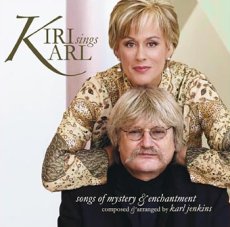
Image © EMI Classics 2006
More Karl Jenkins:
Tlep (2006)
Adiemus Website
|
|
(24 December 2006) Alongside his globally successful Adiemus albums, The Armed Man Mass For Peace, Requiem and the Kazakh-influenced Tlep (review), the Welsh composer Karl Jenkins has also shown his great abilities in composing wonderful music for world-renowned soloists such as Lesley Garrett, Bryn Terfel and Simon Keenlyside. The latest collaboration has been made with the New-Zealand soprano, Dame Kiri Te Kanawa, entitled Kiri Sings Karl--Songs of Mystery & Enchantment (EMI Classics (UK) 094635 32572, 2006), and this album indeed manages to continue the series of great collaborations in great style. The initial kick-off for the project came, according to Karl himself, from the President of EMI Classics UK, Richard Lyttelton. And, what an interesting and fruitful idea it is indeed! Jenkins brings his own musical trademarks to the project: the invented nonsensical language of Adiemus fame, the rich usage of Pamela Thorby's records, a range of percussion instruments, and wonderful tribal choruses provided by the nine-strong Finnish Adiemus Singers team. Kiri introduces equally succesfully a cornucopia of material by Latin American composers such as Carlos Guastavino and Alberto Ginastera as well as the Spanish one, Ariel Ramirez. With so many diverse influences, some might think that this kind of a marriage would be doomed to failure. But, as with Karl's previous albums that have contained "mix-and-match" ingredients from across the world, everything here works very well indeed. Jenkins often experiments with new material and he has done so on this album as well. For example who would have believed that Kiri's voice could have been multi-tracked up to nine times? Karl has done this previously with Miriam Stockley in his Adiemus series. This is a unique step to make for opera singers and all other big classics of the classics, but in this case, the brave steps has proven very successful. On the other hand, this braveness doesn't go too far, so the great melodies and lush rhythms of all the pieces are finely woven together and decorated with Kiri's splendid voice. It is very hard to imagine that Kiri is the same age as Karl, 62 years, at least if judging from what one can hear. Many purists within opera and classical music in general would shake their heads when hearing that such a big star as Kiri has actually joined forces with a composer who does something else than classical standards we already know. But, the mixture of genres on this album is much more than welcome. It is a sign of great flexibility, both in terms of thinking and singing, which is, sadly, lacking from some within classical music business today. It is also a bridge between various musical genres, mixing pure classical music with lighter melodies. Many listeners that might have felt classical music alien to them will find this blend can broaden their listening repertoire massively. To summarize, the album will appleal not only to purists but also those who are starting to discover classical music, since it is not as hard to digest as some of the heavy classical standards, for example, as Wagner's operas, might be. Obviously not to demote these old masterpieces, music listeners need soft bridges between various genres as Karl and Kiri have done together here. From the point of view of the long-standing Karl Jenkins and Adiemus enthusiast, this new album is a safe purchase. Of course there are tracks such as "In Paradisum," "Allegrettango," and "Mazurka" (Akruzam) which are familiar for those who have heard the Adiemus and Karl Jenkins albums so far, but then again three out of the sixteen tracks in total is not too much repetition. As the re-hashed tracks have been re-recorded for this album, it also gives them some new dimensions as well. Not only thanks to Kiri and the London Symphony Orchestra, but also thanks to the Finnish team who have recorded their vocals in a studio in Helsinki. The usage of a new orchestra and the new studio for the Finnish team have both given the already familiar music even more colour and more quality. Obviously the only question that remains unanswered at least for some time is, are we going to hear and see these songs being performed live in concert. At the moment Kiri, who has already left the opera world, has been touring across the world with her own materia. Now, having listened to such heart-warming, toe-tapping and melodic music that succeeds wonderfully in entertaining a long time after the listening has ceased, this material live in concert with Karl and all the  wonderful musicians involved should be at least as wonderful an experience as buying this, simply stunning, album!--Suvi Kaikkonen in Oulu, Finland and Russ Elliot in New York wonderful musicians involved should be at least as wonderful an experience as buying this, simply stunning, album!--Suvi Kaikkonen in Oulu, Finland and Russ Elliot in New York 
|
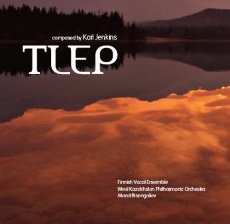
Image © Sony Classical 2006
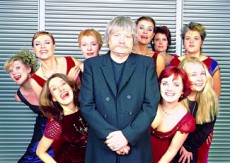
Jenkins and the Finnish Vocal Ensemble
Image © Finnish Vocal Ensemble 2006
More Karl Jenkins:
Kiri Sings Karl (2006)
Adiemus Vocalise SK |
PV (2003)
Adiemus IV The Eternal Knot (2000)
Adiemus Website
|
|
(24 December 2006) Over the latest ten years or so, the phenomenal Welsh composer Karl Jenkins has successfully created memorable music that blentds several different musical genres together in highly interesting and unique ways, while not being too diverse, too modern or too atonal. On his latest recording, Tlep (Sony BMG Music Entertainment (UK) 828768 44252 4, 2006), we are offered a wonderful armchair trip to Kazakhstan, a small country between Europe and Asia that once was under the Soviet rule before gaining independency fifteen years ago. The title of the work, Tlep (pronounced "Klep"), refers to a person called Tlep Aspantaiuly, who was a famous composer and player of a violin-like, two-string instrument called the kobyz. During the Soviet rule, the Kazakh cultural tradition was near to extinction, as no-one was allowed to use their native language that is related to those languages spoken in Turkey. This obviously made the transfer of the rich cultural heritage for younger generations very difficult, if not impossible to certain extent, so it isn't until these days that the Kazakh language and the cultural identity have started to live again. Still, only five percent of the fifteen million Kazakh population have maintained Kazakh as their native language. One of the most active people in this cultural heritage restoration process has been Tlep Aspantaiuly's heir, Sapar Iskakov. Not only did he set up a foundation to support young Kazakh musicians, but he also has collaborated with the leader of West Kazakhstan Philharmonic Orchestra, Marat Bisengaliev, helping him to set up an international violin competition as well as making the Kazakh culture more known also abroad. Two years ago also Karl Jenkins joined forces with Marat, and the stunning release of Jenkins' Requiem marked the first ever album for the Kazakh orchestra to be released through a western record label. The orchestra then performed both Requiem and Jenkins' own work both in the UK and in Kazakhstan to great acclaim. Luckily this was not the end of the fabulous collaboration that had already been initiated, namely, later on Iskakov got in touch with Jenkins and persuaded him to compose a commission work that would honour his great ancestor Tlep and the Kazakh culture. So the seven-movement work for female chorus, a symphony orchestra and four percussionists was born. With a cornucopia of the Kazakh arts and music tradition to draw upon, the release of the Tlep album is a fabulous introduction to the cultural richness of the Kazakh people in general. As Tlep is a commissioned work, this means that all seven movements of it have been composed by Karl Jenkins. Obviously some degree of artistic liberty must be allowed here, but, at Jenkins has successfully handled the Kazakh influences with extreme care. Alongside the already mentioned kobyz instrument, Karl has included three other Kazakh folk instruments to his scoring; the saz syrnai which is somewhat akin to ocarina, the dombra which is similar to a two-string balalaika, and the shankobyz which is akin to a jew's harp. These all bring a great deal of authenticity and vibrancy to the music, making it to sound very genuine and coming straight from the passionate hearts of the musicians. Although recorded without the stunning vocals of Miriam Stockley as on Jenkins' Adiemus Vocalise (review) album, Tlep will still entice Adiemus enthusiasts with the characteristic multi-layered vocals performed here by the Finnish Vocal Ensemble (formerly the Finnish Adiemus Singers). Instrumental arrangements are lush and percussive and largely Adiemus in style. In addition to the use of a Kazakh orchestra, some Kazakh folk instruments and instrumentalists, the lyrics of the songs are original Kazakh as well. The source author for the texts is the revered 19th century philosopher and poet, Abai Ibragim Kunanbaiuly. One cannot but admire the fearless and very brave, unprejudiced attitude of the nine-strong Finnish vocal ensemble who have successfully been able to tackle with learning the extremely tricky phonetics of the Kazakh language, relying only on audio samples! The album also features contributions from soprano Aruhan Bisengaliev and Nigel Hitchcock on saxophone, both of whom have performed on prior Adiemus albums. Tlep offers the listener a very cohesive, but still yet versatile musical experience. At times the music is very filmic, for example in "Tulpar" one can almost see the winged horse galloping through the steppes when listening to the track, and on the other hand, one is reminded of the passing of the time very vividly in "Zamanai." The range of emotions vary from one song to another, following exactly the meaning of the lyrics. At one time there is joyous dancing as in "Bea," or love stories like in "Dudarai" and "Kozimnin Karasy" for example. In other words, every song has its own mood and own story to be unfold, and both the lyrics and the music always work in perfect harmony together. Obviously there are elements that are typical for Karl's composing style in general, but then again he really gives respect to the Kazakh elements as well. Therefore, it would be a big pity if this masterpiece would not receive a worldwide audience, may it be in terms of releasing the album or in terms of giving the work more live performances. From the very first listening, Tlep has proven to be a heroic deed, and it shows the world the great cornucopia that folk tradition can be, regardless of nation, and how this kind of a cultural masterpiece can become a vital part in restoring cultural identity that once was nearly vanished.--Suvi Kaikkonen in oulu, Finland and Russ Elliot in New York 
|
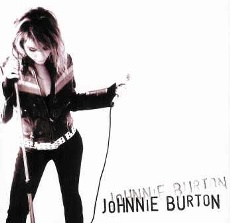
Image © Johnnie Burton 2005
Interview and Photos (2006)
|
|
(30 December 2006) Throughout the years many a man has dominated the world of rock and roll. Only a handful of women in the genre have garnered the respect of their male counterparts though. Strong women like Bif Naked, Joan Jett, Deborah Harry, and the like spent years making names for themselves while clearing a path for artists like newcomer Johnnie Burton. Burton is tough as nails but distinctly feminine approach flies in the face of the idea that rock and roll is "man's world." With an amazing self-titled and self-released debut album just released Johnnie Burton is set to shake the foundations of any rock fans music collection. We recently had the chance to talk with Johnnie about her new album and more. Read the results of our interview with Johnnie completed earlier this year. Burton's album is comprised of eleven fast-paced traditional rock'n'roll tracks spanning a whopping 32 minutes. In addition to being a songwriter and tremendous lead guitar player, the woman has the powerful vocal chops necessary to cut through the instrumental backing and punch through with the lyrical message. Johnnie brought in some additional talent to contribute to the album. The band is comprised of Dave Phillips (rhythm guitar), Paul Engel (bass), Ralf Balzer (drums, percussion and loops). Guests include: Hans Kline (add'l guitars and bv), Gary North White (atmosphere guitars), Daniel Alexander (piano and strings) and Nicole Tafralian (bv) and Kaspar Abbo (bv). Vocally, Johnnie can be compared at times to the most rocking edition of Tracy Hitchings crossed with Stevie Nicks. Lyrics are not for the faint of heart, but the music will get your foot tapping and your bootie moving. This debut album from Johnnie Burton is likely to appeal to enthusiasts of early Lisa Bouchelle  albums and rock fans in general. Released in 2005, it's probably reasonable to expect another album in 2007.--Mark Fisher in West Virginia and Russ Elliot in New York albums and rock fans in general. Released in 2005, it's probably reasonable to expect another album in 2007.--Mark Fisher in West Virginia and Russ Elliot in New York 
|
|

























